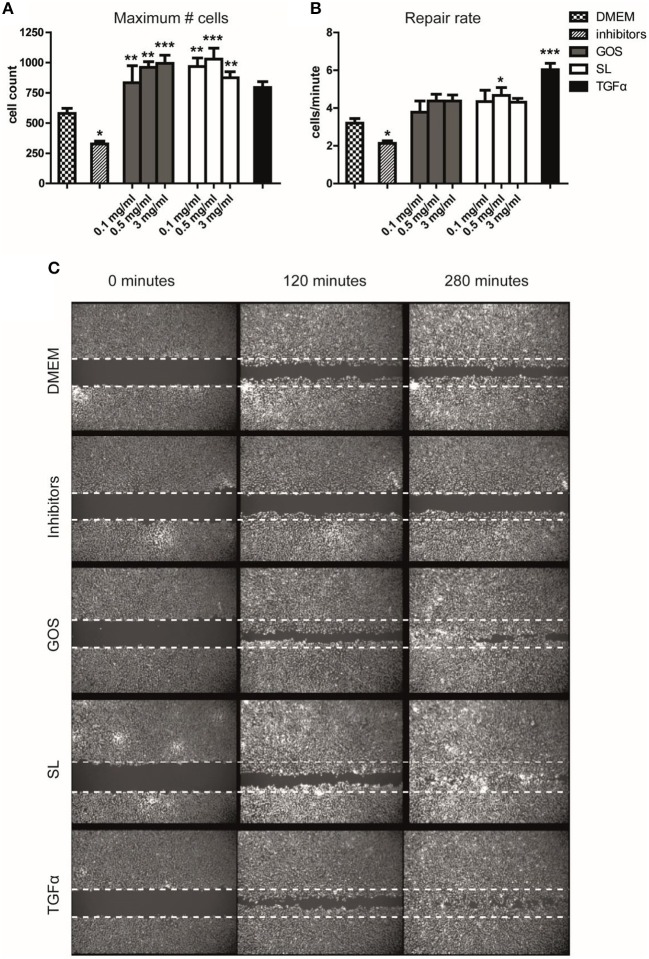Figure 2.
SL and GOS promote re-epithelialization, one aspect of wound healing. Longitudinal scratches were applied to a confluent layer of labeled Ca9-22 epithelial cells. The medium with cell debris was replaced by fresh medium containing mixtures of 3′SL and 6′SL as present in cow's milk (0.1 mg/ml), human milk (0.5 mg/ml) and human colostrum (3 mg/ml) or matching concentrations of GOS or inhibitors or TGFα that were used as negative and positive controls, respectively. (A) The total number of cells at the end of the measurement (t = 280min) and (B) the increase in cell numbers over time (i.e., repair rate) was calculated using a non-linear model using the Gompertz equation. Data of three independent experiments (n = 7–11) was represented as mean ± SEM. (C) An image of one representative well was shown (0.5 mg/ml SL or GOS). Significant differences compared to DMEM control were indicated by *P < 0.05; **P < 0.01 and ***P < 0.001.

